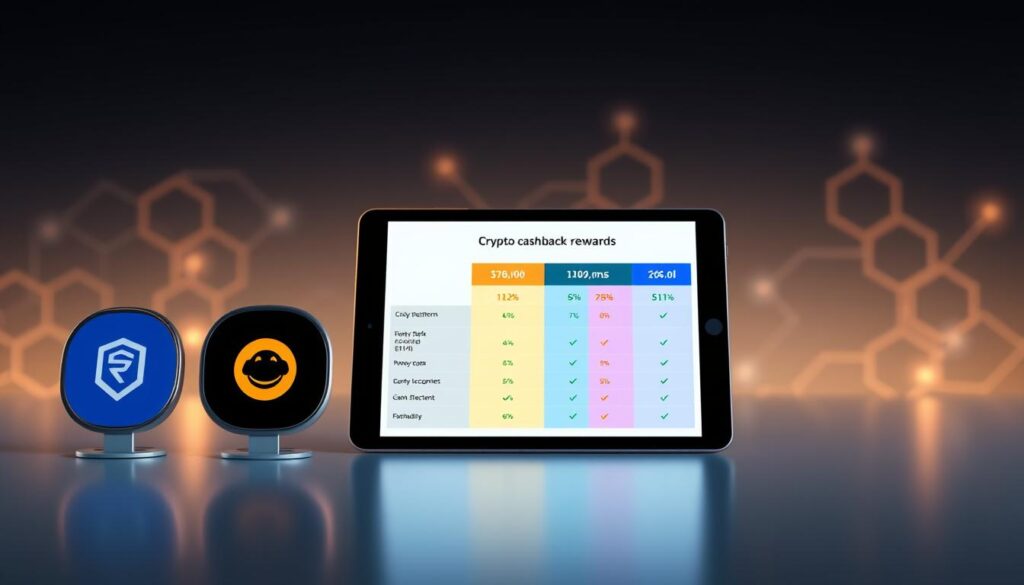Now Reading: Crypto Dollar Averaging: Reduce Risk in Your Portfolio
- 01
Crypto Dollar Averaging: Reduce Risk in Your Portfolio
Crypto Dollar Averaging: Reduce Risk in Your Portfolio
Building wealth in unpredictable markets requires strategies that prioritize stability over speculation. One method gaining traction among savvy investors involves consistently allocating funds across set intervals, regardless of price fluctuations. This systematic approach removes emotion from decision-making and creates a disciplined framework for long-term growth.

By dividing investments into smaller, regular purchases, you avoid the pitfalls of trying to “time the market.” Prices in digital asset markets often swing dramatically within short periods, making lump-sum investments inherently risky. Spreading purchases over weeks or months ensures you automatically acquire more tokens when values dip and fewer when they peak.
This guide focuses on practical applications rather than unrealistic promises. You’ll learn how to implement this strategy effectively, compare it with alternative methods, and discover real-world examples of its risk-mitigation power. Whether you’re new to digital assets or refining your portfolio management, these principles offer clarity in chaotic markets.
Key Takeaways
- Eliminates guesswork by automating purchases at fixed intervals
- Reduces exposure to sudden price drops through gradual accumulation
- Works exceptionally well in markets with frequent price swings
- Simplifies decision-making for investors at all experience levels
- Encourages disciplined, long-term financial habits
Understanding Crypto Dollar Averaging
Effective investment approaches in erratic environments focus on steady progress rather than timing peaks. Dollar-cost averaging (DCA) offers a structured way to navigate price swings by spreading purchases over weeks or months. This method prioritizes consistency, allowing you to build positions without stressing over daily market movements.

What Is Dollar-Cost Averaging?
DCA is a systematic investment approach where you allocate a fixed sum to an asset at regular intervals. For example, investing $100 weekly in Bitcoin ensures you buy more coins when prices drop and fewer when they rise. Over time, this balances your average purchase price, as explained in this guide to strategic accumulation.
Key Principles Behind the Strategy
The core idea revolves around consistency over precision. Instead of chasing ideal entry points, you let mathematics work in your favor. Lower prices automatically increase your holdings, while higher prices limit overexposure. This removes emotional reactions to volatility, like panic selling during crashes.
Another principle is long-term compounding. Small, recurring investments grow steadily, even with modest starting capital. By sticking to a schedule, you build discipline while sidestepping the stress of predicting short-term trends.
Benefits of a Dollar-Cost Averaging Investment Strategy
Adopting a methodical approach to portfolio growth helps investors bypass emotional pitfalls while capitalizing on market patterns. This strategy proves particularly effective in environments where prices swing unpredictably, offering multiple advantages beyond simple risk reduction.

Managing Market Volatility
Market turbulence often triggers impulsive decisions. A structured plan automatically adjusts your position size based on current valuations. You accumulate more units during price dips and fewer during spikes, creating a balanced cost basis over months or years.
This approach eliminates the stress of predicting short-term movements. Investors avoid the common trap of pouring funds into overheated markets while maintaining exposure to potential rebounds. Studies show consistent allocations during downturns yield better long-term results than one-time purchases.
Building Wealth Over Time
Small, recurring contributions harness the power of compounding. Even modest weekly investments grow substantially across multiple market cycles. For example:
- $50 weekly becomes $2,600 annually
- 5% average monthly growth triples holdings in 5 years
- Automatic purchases continue through all market phases
New participants benefit from low entry barriers – no large upfront capital or technical expertise required. The system enforces financial discipline, turning sporadic speculation into habitual wealth creation.
How to Implement a Crypto Dollar Averaging Strategy
Transforming market uncertainty into opportunity starts with a clear roadmap. This approach turns unpredictable price swings into tools for building positions methodically. Let’s break down the essential steps to create a sustainable plan tailored to your financial objectives.

Setting Your Investment Goals
Begin by defining specific outcomes. Are you saving for retirement, a home down payment, or generational wealth? Each goal determines your timeline and risk tolerance. A 10-year retirement plan might prioritize stable assets, while a 3-year savings target could focus on growth-oriented options.
Calculate an affordable contribution amount. Allocate funds from disposable income without compromising daily needs. Even $20 weekly adds up to $1,040 annually – enough to participate in market movements while maintaining financial flexibility.
Choosing the Right Purchase Intervals
Frequency impacts cost averaging effectiveness. Weekly buys capture more price variations, while monthly schedules simplify budgeting. Consider these factors:
- Income cycles: Align purchases with paycheck dates
- Market conditions: Increase frequency during high volatility
- Personal bandwidth: Manual purchases offer adjustment opportunities
Many platforms let you set recurring reminders instead of automatic transactions. This hybrid method maintains consistency while preserving flexibility to skip purchases during extreme price spikes.
Focus on established digital assets with proven track records. While newer tokens might tempt with quick gains, they lack the stability required for long-term accumulation strategies. Regular monitoring should track progress, not daily price ticks, to avoid emotional decisions.
Crypto Dollar Averaging vs. Lump-Sum Investing
Balancing risk and reward becomes critical when choosing how to deploy capital in fluctuating markets. Two distinct philosophies emerge: gradual accumulation versus immediate full commitment. Each method carries unique advantages tailored to different market behaviors and investor temperaments.
Comparing the Pros and Cons
Lump-sum investing shines in bull markets where early entry maximizes gains. Putting all funds into assets during upward trends often outperforms staggered purchases. However, this requires precise timing – a challenge even for seasoned traders.
The systematic approach spreads exposure across price fluctuations. During volatile periods, this method lowers average costs by acquiring more units when values drop. While potentially sacrificing peak returns, it minimizes the impact of buying at temporary highs.
Consider these critical factors when choosing:
- Market trajectory: Rising markets favor immediate investments
- Risk appetite: Nervous investors benefit from incremental buying
- Capital availability: Large sums enable lump-sum strategies
Psychological comfort plays a vital role. Spreading purchases eases anxiety during downturns, while lump-sum methods demand emotional resilience. Historical data shows gradual accumulation reduces regret from poorly timed investments by 42% in choppy markets.
Ultimately, timeline and goals dictate the optimal path. Long-term investors might blend both methods – deploying a portion upfront while scheduling recurring buys. This hybrid model captures immediate opportunities while maintaining downside protection.
Practical Tips for a Successful DCA Approach
Maximizing the effectiveness of systematic investing requires combining discipline with smart tools. While the core concept remains straightforward, thoughtful execution separates average results from exceptional outcomes.
Utilizing Automation and Recurring Orders
Automated systems simplify adherence to your plan by executing purchases like clockwork. Most platforms let you schedule weekly or monthly allocations with minimal effort. However, rigid automation might prevent strategic responses to extreme price drops or personal financial changes.
Consider these options for balancing convenience with control:
- Zero-fee recurring orders reduce transaction costs over time
- Calendar alerts for manual purchases allow adjustments during market crashes
- Hybrid systems combine automated buys with optional bonus investments
Monitoring and Adjusting Your Investments
Regular check-ins maintain strategy alignment without fostering obsession. Review your portfolio quarterly rather than daily – this frequency catches significant trends while avoiding noise. Key adjustment triggers include:
- Sustained 30%+ price declines warrant increased allocations
- Personal income changes necessitate contribution adjustments
- Major life events may require temporary pauses
Advanced practitioners sometimes modify amounts based on volatility indicators, though this demands deeper market understanding. Regardless of modifications, preserve the strategy’s core strength: consistent participation across market cycles. For those exploring different time horizons, our guide to long-term vs short-term approaches offers complementary insights.
Avoid tinkering with intervals or amounts based on short-term news. Emotional decisions often undermine mathematical advantages. Set clear rules for deviations – and stick to them.
Mastering crypto dollar averaging for Optimal Risk Management
Seasoned investors recognize that successful portfolio growth demands flexibility within disciplined frameworks. While consistency forms the backbone of systematic accumulation, strategic adjustments enhance outcomes across shifting market landscapes.
Adapting Your Strategy to Market Conditions
Market cycles dictate tactical modifications to your allocation patterns. During extended downturns, consider increasing purchase amounts by 20-30% when prices dip below key support levels. Conversely, reduce allocations by 15% when markets enter overbought territory to preserve capital.
Diversification strengthens this approach. Allocate funds across three to five major digital assets with distinct use cases. For example:
- 50% to established store-of-value tokens
- 30% to smart contract platforms
- 20% to emerging sector leaders
Technical indicators like RSI or moving averages can signal when to temporarily boost purchases without abandoning scheduled intervals. Maintain core allocations while using 10-15% of funds for these opportunistic adjustments.
Life events and project fundamentals warrant strategy reviews. Pause contributions if:
- Essential income sources change
- Core holdings face regulatory challenges
- Network security risks emerge
Combine systematic buying with small speculative positions (5% portfolio maximum) to satisfy growth appetites while protecting principal. This hybrid model preserves the mathematical edge of regular purchases while accommodating market enthusiasm.
Wrapping Up Your Investment Journey
Navigating financial markets demands strategies that blend patience with precision. Dollar-cost averaging (DCA) simplifies wealth-building by turning market swings into opportunities rather than obstacles. This method lets you accumulate assets steadily, smoothing out price extremes without requiring constant monitoring.
The strategy’s strength lies in its emotional detachment. By automating purchases, you sidestep impulsive decisions during volatility spikes. Platforms like Yuh enhance this approach with automatic investment features, letting you focus on long-term goals instead of daily fluctuations.
Successful investors adapt their tactics as markets evolve. While DCA provides stability, occasional reviews ensure alignment with changing financial priorities or economic shifts. Remember – time magnifies small, consistent contributions into substantial growth.
Whether you’re starting with $50 monthly or scaling existing holdings, this systematic path transforms uncertainty into manageable progress. The real win? Building discipline that outlasts market cycles while keeping your portfolio resilient.
FAQ
How does dollar-cost averaging reduce emotional decision-making?
By investing fixed amounts at regular intervals, this strategy removes the urge to react impulsively to short-term price swings. It encourages discipline, helping investors avoid panic selling or overbuying during extreme market movements.
Can dollar-cost averaging work for assets like Bitcoin?
Yes. Bitcoin’s historical volatility makes this approach particularly useful. Regular purchases spread exposure across price highs and lows, softening the impact of sudden market shifts while accumulating the asset incrementally.
What purchase intervals are optimal for crypto dollar averaging?
Common intervals include weekly, biweekly, or monthly schedules. Choose a frequency matching your cash flow—like aligning with a paycheck—to ensure consistency without straining your budget.
How does lump-sum investing differ from dollar-cost averaging?
Lump-sum investing involves deploying all capital at once, potentially maximizing gains in rising markets but risking larger losses if prices drop. Dollar-cost averaging prioritizes gradual entry, reducing exposure to bad timing while accepting smaller upside potential.
Should I adjust my strategy during a bear market?
Periods of lower prices can be advantageous for accumulating more units of an asset. However, stick to your predetermined plan unless your financial goals or risk tolerance change significantly.
Can automation improve a dollar-cost averaging plan?
Absolutely. Platforms like Coinbase or Binance allow automated recurring buys, ensuring you never miss a scheduled investment. This “set-and-forget” method minimizes human error and emotional interference.
Does dollar-cost averaging guarantee profits?
No strategy eliminates risk entirely. While it reduces the impact of poor timing, long-term success depends on the asset’s fundamentals and broader market trends. Always research before committing funds.
How long should I maintain a dollar-cost averaging approach?
This strategy thrives over years, not months. Commit to a multi-year horizon to ride out volatility and benefit from compounding. Adjust only if your financial objectives evolve.












